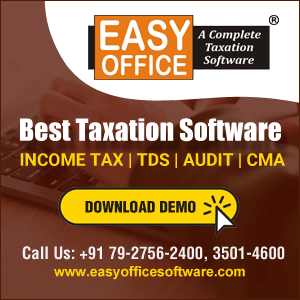"New Tax Regime" or "Optional Tax Regime," was introduced as part of the Union Budget 2020-21. This regime aims to simplify the income tax structure and provide taxpayers with an alternative tax computation method.
Here are some potential benefits of the new tax regime in India
Lower Tax Rates and Simplicity
The new tax regime offers lower tax rates and simplifies the tax structure, making it easier for taxpayers to understand and calculate their tax liabilities.
Example: Under the old tax regime, the income tax rates were higher, with multiple tax slabs and complicated calculations based on income. However, the new regime introduced reduced tax rates with fewer slabs, such as 5%, 10%, 15%, 20%, and 25%, depending on the income level.

Elimination of Deductions and Exemptions
The new tax regime does away with various tax deductions and exemptions, reducing complexity and the need for extensive tax planning.
Example: Under the old tax regime, taxpayers could claim deductions for expenses like house rent, medical insurance, children's education, etc. By opting for the new tax regime, taxpayers can avoid the complexity of calculating and claiming various deductions and exemptions, making the tax filing process easier and faster
Ease of Compliance and Reduced Paperwork
The new tax regime simplifies tax compliance as taxpayers do not need to track and claim multiple deductions, leading to reduced paperwork and administrative burden.
Example: Under the old tax regime, taxpayers had to maintain records and receipts for various deductions, making tax filing more time-consuming and cumbersome. The new regime streamlines the process, making compliance easier.
Attractiveness to Young Professionals
The new tax regime is particularly appealing to young professionals and individuals with lower incomes and fewer investments, as it offers lower tax rates without the need for extensive tax planning.
Example: A fresh graduate who has just started earning and has limited investments might find the new tax regime beneficial, as it offers lower tax rates and simplifies tax calculations.
Reduction in Tax Evasion
The new tax regime's simplified and transparent structure may help reduce tax evasion and increase tax compliance.
Example: With fewer deductions and exemptions, taxpayers have less incentive to manipulate their income or hide taxable assets, leading to improved tax collection and reduced tax evasion.
No Need for Investment Proof
As the new tax regime does not allow deductions, taxpayers do not need to maintain and submit proofs of investments and expenses while filing their tax returns.
Choice for Taxpayers
Taxpayers who had substantial deductions and exemptions could choose the old regime to maximize their tax savings. hose with fewer deductions and a preference for simplicity could opt for the new regime, even if they might not save as much on taxes.
Savings on Tax Planning Costs
Taxpayers may save money spent on tax planning services or software, as tax planning becomes simpler under the new tax regime.
Also there are some of the key disadvantages of the new tax regime given below
Loss of Deductions and Exemptions
One of the main drawbacks of the new tax regime is the elimination of various tax deductions and exemptions available under the old regime. Taxpayers who heavily relied on these deductions to reduce their taxable income might find the new regime less beneficial.
Complex Decision-making
Choosing between the old and new tax regimes can be complex and requires a thorough analysis of individual financial situations, investments, and deductions. Taxpayers need to carefully evaluate which regime will result in lower tax liabilities.
Impact on Long-term Savings and Investments
Taxpayers who made substantial investments for long-term savings and relied on specific deductions, such as investments in Equity-Linked Savings Schemes (ELSS), Public Provident Fund (PPF), or National Savings Certificate (NSC), might not receive the same level of tax benefits under the new tax regime.
Uneven Benefits for Different Taxpayers
The new tax regime may provide more significant tax benefits to certain categories of taxpayers, particularly those with lower incomes and minimal deductions. On the other hand, taxpayers with higher incomes and significant deductions might find the old regime more advantageous.
Reduced Incentives for Specific Expenditures
The elimination of deductions for expenses like house rent, medical insurance, and tuition fees might reduce the incentives for taxpayers to invest in these areas.
Potential Impact on Savings Rate
With the removal of various tax-saving investment options, the new tax regime might discourage certain individuals from making long-term savings and investments, which could have implications for personal financial planning.
Lower Tax Savings for Families with Dependents
Taxpayers with significant family responsibilities, such as children's education expenses, housing loans, and medical costs, might find the old tax regime more beneficial due to the availability of specific deductions and exemptions.
In summary, the new tax regime provides lower tax rates and simplifies the filing process, but it comes at the cost of foregoing deductions and exemptions. The old tax regime, on the other hand, allows taxpayers to claim various deductions and exemptions, potentially reducing their tax liability. The choice between the two depends on individual preferences, financial goals, and the level of deductions that taxpayers are eligible to claim. It is advisable to evaluate both options carefully, consider individual financial situations, and seek professional advice if needed before making any decision.








 CAclubindia
CAclubindia

